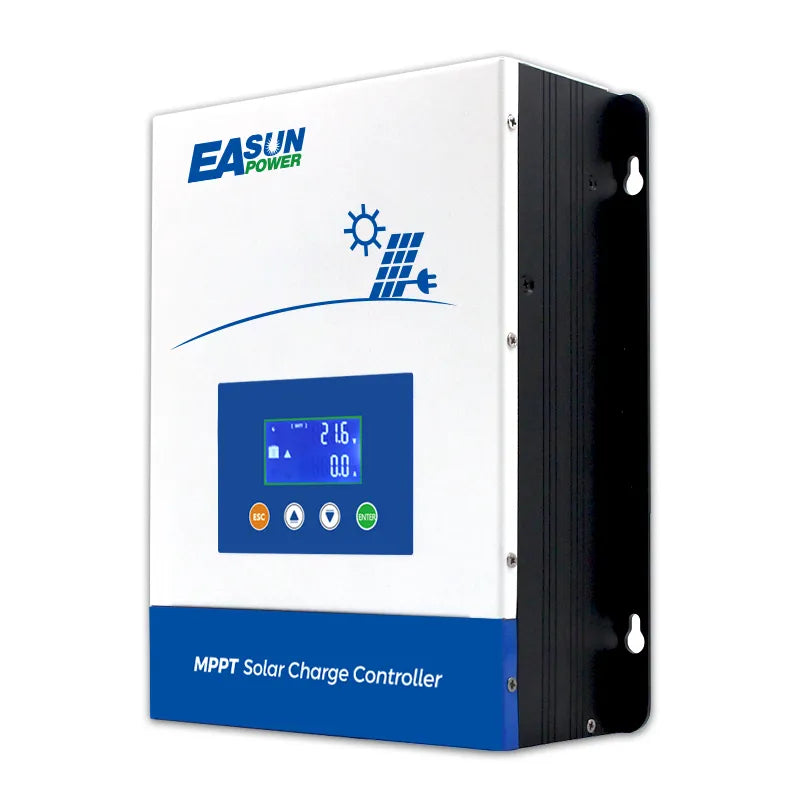Unlock the Secret to Solar Success: PWM vs. MPPT Charge Controllers Revealed!
In the world of solar energy systems, choosing the right solar charge controller is crucial for maximizing the efficiency and longevity of your setup. These controllers act as the brain of your solar power system, regulating the voltage and current coming from your solar panels to charge your batteries effectively. The two primary types of solar charge controllers are Pulse Width Modulation (PWM) and Maximum Power Point Tracking (MPPT). Understanding the differences between these two options can significantly impact your solar energy usage and overall system performance. In this article, we will explore the features, benefits, and ideal applications for both PWM and MPPT charge controllers to help you make an informed decision tailored to your solar needs.

Understanding Solar Charge Controllers
Solar charge controllers play a vital role in solar power systems by managing the energy flow from solar panels to batteries. They ensure that batteries are charged efficiently, prevent overcharging, and help maintain battery health over time. Essentially, they regulate the voltage and current to keep the batteries at optimal levels. Without a proper charge controller, batteries could be damaged due to excessive voltage or could fail to reach a full charge. The main functions of solar charge controllers include battery charging, protection from overcharging and discharging, and optimization of energy efficiency. By understanding these fundamental roles, users can appreciate the importance of selecting the right type of charge controller for their solar energy systems.
PWM Charge Controllers: Features and Benefits
Pulse Width Modulation (PWM) charge controllers are the more traditional type of solar charge controller. They operate by connecting the solar panels directly to the battery and adjusting the output voltage to match the battery voltage. This method of charging is often simpler and more cost-effective. PWM controllers are easy to install and require minimal maintenance, making them a popular choice for smaller solar setups or for users who are new to solar technology. They are most beneficial in applications where solar panels are closely matched to battery capacity, such as in small off-grid systems, RVs, or boats. In fact, a friend of mine who has a modest solar setup in his RV swears by his PWM controller for its reliability and cost-effectiveness, showcasing that sometimes simplicity is key.
MPPT Charge Controllers: Features and Benefits
Maximum Power Point Tracking (MPPT) charge controllers are a more advanced option that allows solar panels to operate at their maximum power output. They do this by adjusting their input voltage to find the optimal operating point for the solar array, which translates to better performance, especially in conditions of low sunlight or when panels are partially shaded. MPPT controllers can capture more energy from the solar panels, making them ideal for larger systems or setups where efficiency is paramount. They are particularly advantageous in applications with limited space, such as residential rooftop installations, where optimizing every bit of sunlight is crucial. I remember visiting a friend’s home who had installed an MPPT controller; he was thrilled with the increased energy output he experienced during cloudy days compared to his previous PWM setup.
Comparison: PWM vs. MPPT Charge Controllers
When comparing PWM and MPPT charge controllers, several factors come into play, including efficiency, cost, complexity, and suitability for various applications. PWM controllers are generally more affordable and simpler to install, making them a viable option for smaller, less complex systems. However, they typically have lower efficiency, especially in situations where solar panel output is high and battery needs fluctuate. On the other hand, MPPT controllers, while more expensive and technically complex, offer higher efficiency and adaptability, particularly in larger or more variable solar setups. Users should consider their specific energy needs, budget, and the type of solar installation they have when deciding between the two. For instance, someone looking to expand their solar system in the future might find the adaptability of an MPPT controller to be a significant advantage.
Making the Right Choice for Your Solar Setup
Choosing the right solar charge controller depends on several factors, including the size of your solar system, your budget, and your energy requirements. For smaller systems or those just starting with solar energy, a PWM controller may offer the simplicity and cost savings needed. However, for larger systems or those anticipating future expansion, investing in an MPPT controller could provide significant long-term benefits regarding efficiency and energy capture. It's also essential to consider your location and typical weather conditions, as systems in areas with frequent cloud cover may benefit more from the advanced capabilities of MPPT controllers. Ultimately, assessing your individual needs and future energy goals will guide you to the right choice.
Choosing the Best Solar Charge Controller for Your Needs
In summary, selecting the right solar charge controller is crucial for optimizing your solar energy system's performance. Understanding the differences between PWM and MPPT charge controllers can help you make an informed decision that aligns with your energy needs and budget. Whether you choose the cost-effective and straightforward PWM controller or the advanced and efficient MPPT controller, ensuring that the choice aligns with your specific requirements is vital for maximizing the benefits of solar energy. Take the time to assess your current setup and future aspirations, and you'll be well on your way to achieving solar success.



